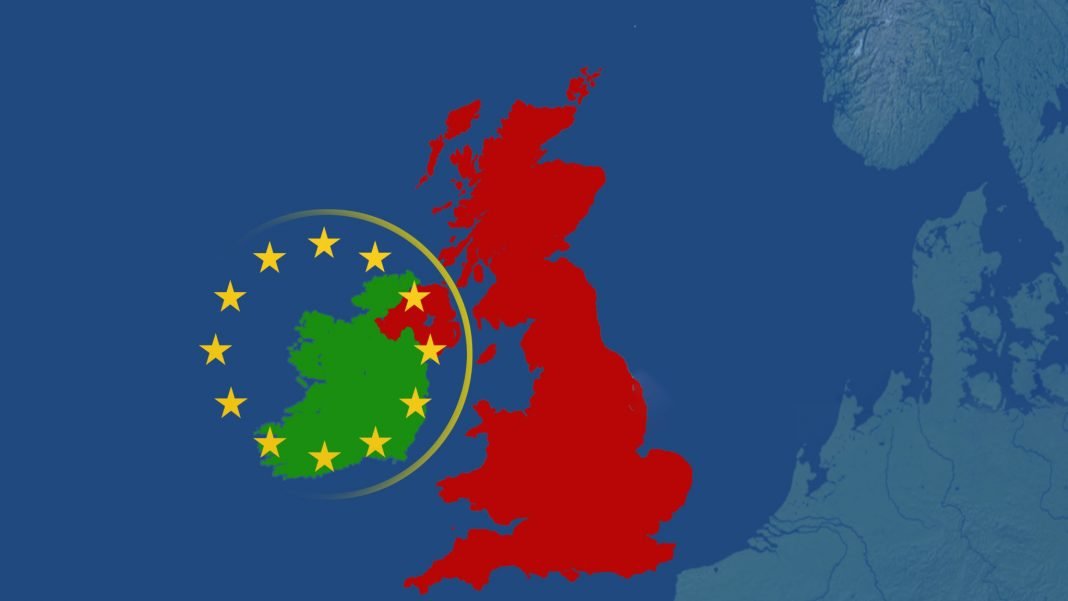Old Cracks Reappear
The peace treaty that ended the bitter conflict in Northern Ireland a quarter of a century ago is now useless. New issues, especially Brexit, have revived old differences. The relative calm existing among groups which made peace 23 years ago is now gone. Two main factors can be considered for this, namely the UK withdrawal from the European Union and the Covid-19 pandemic. These factors appear to have played a major part in reviving the differences between pro-British Protestants and pro-United Ireland nationalists who are often Catholic.
Protests have been going on on the streets of Belfast for more than a week now. The capital and other parts of Northern Ireland have seen riots and many police officers have been injured. Grenades were hurled at police and buses were set on fire by 13-year-olds.
Boris Johnson has expressed concern that the worst long-term violence on the streets of Northern Ireland and England are still to come. So instead of worrying about Ireland, he should focus on domestic issues.
Here we look at Northern Ireland and its issues.
Geography of Northern Ireland
Northern Ireland has an area of 5,400 square miles, and approximately two million people live under British rule in the northeastern part of the Irish Islands which borders the Republic of Ireland to the south and west and the Irish Sea to the east, separating it from the rest of Britain.
Autonomous Ireland
Ireland became autonomous almost 100 years ago, centuries after British rule. But some Protestants refused to join the predominantly Catholic Republic of Ireland.
So, the North remained part of England with a Protestant-dominated police and local government. But the important point was that Britain could have prevented sectarianism here.
A Divided Ireland Is a Source of Violence
The disintegration of Ireland became the source of one of the most violent and enduring sectarian conflicts of the twentieth century, mobilising Catholics and opposition groups to British rule, including the Irish Republican Army (IRA), against Protestants and pro-British forces, including Protestant militant groups.
Belfast became one of the most dangerous places in the world. Some 3,600 people died in decades of conflict in Northern Ireland. Finally, the clashes ended with the Good Friday Agreement.
The Good Friday Agreement
The Belfast Agreement, also known as the Good Friday Agreement, was signed on 10 April 1998 by the Government of the United Kingdom, the Government of Ireland, and the political parties of Northern Ireland.
Under this agreement, power was distributed among Protestants and Catholics. Former enemies pledged to settle their disputes peacefully. Years of relative peace followed until Brexit and the pandemic resumed old disputes.
Brexit Is a Major Factor in the Resumption of Violence
Britain’s exit from the European Union, known as Brexit, upset the political balance in Northern Ireland and threatened the Good Friday Agreement.
Ireland is a member of the European Union. Brexit paved the way for new research on the land border, which was previously not limited to Northern Ireland. Therefore, this now hinders the free flow of people and goods and angers those who want a united island.
Brexit has also created new problems in trade between Northern Ireland and the rest of the UK, upsetting those who consider themselves British in Northern Ireland. Violence in pro-British Protestant areas has increased, raising fears of retaliation by Catholic communities.
Conflict Resolution Strategy
With this level of conflict, the violence is expected to reach new highs which have not been seen for years. The beginning of the cycle of revenge attacks is not far off.
Although Britain does not want to lose Protestant support in Northern Ireland, it is time for the people of Ireland in the North and South to decide their fate in a united Irish referendum.
There should be no new border divisions between the two Irelands to deepen the differences again. Rather, it is the idea of a united Ireland that, if put to the vote, can resolve disputes forever.
The effects of Brexit have spread across Ireland’s borders to the South and North. However, pro-union politicians do not want to discuss the future of a united Ireland. But the time has come for everyone to think of a united Ireland.
The formation of the Federation of Ireland one hundred years since the birth of Northern Ireland is in the interest of all Irish people.
The border divisions in Ireland are a psychological barrier, and the Irish in the North and South are traditionally closer to each other than to England. One hundred years later, the culture of both Irelands is still the same. So if the North and South are to come together, the image of being Irish must be stronger around the world.

